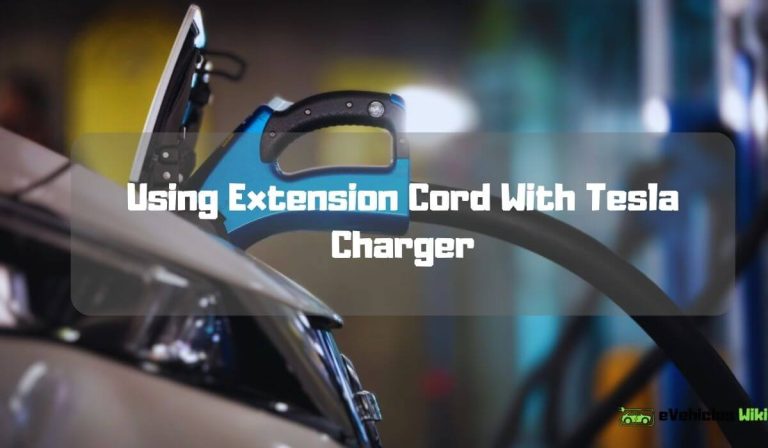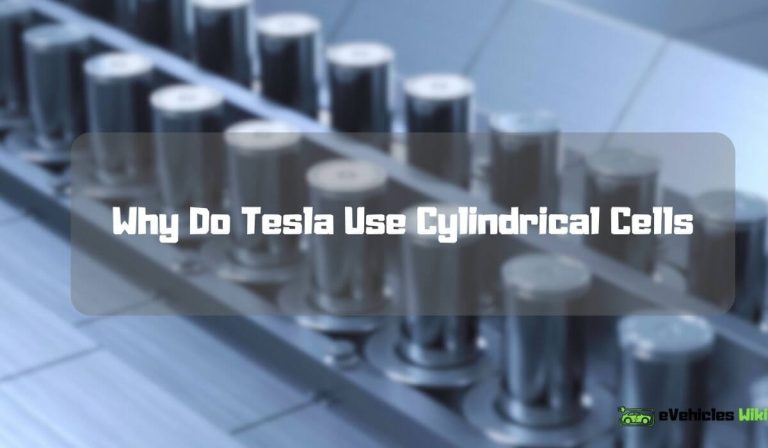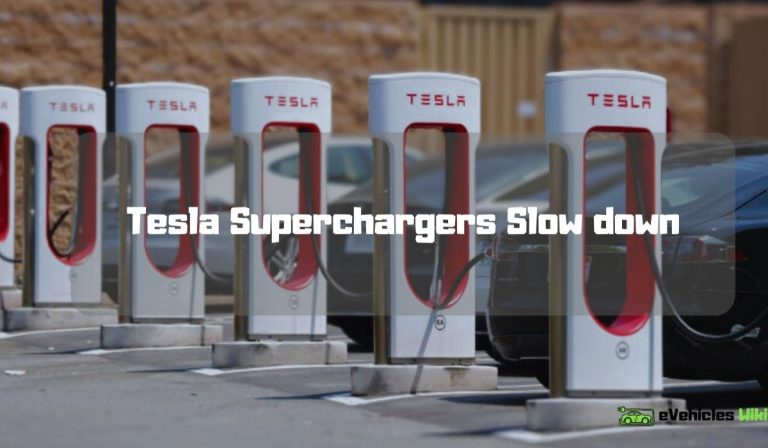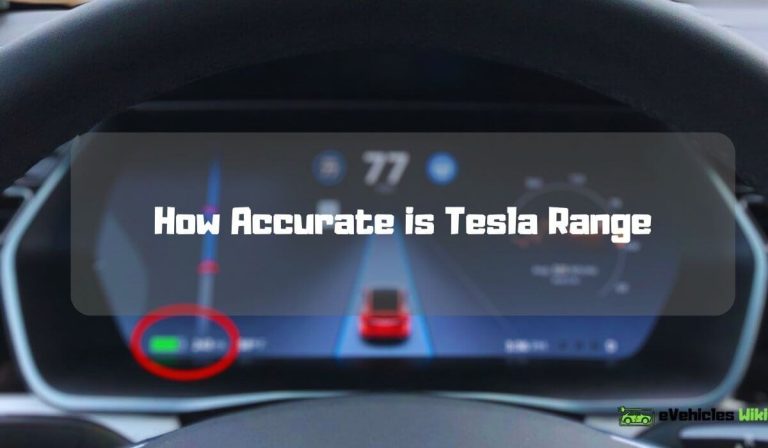Do the Tesla Have an Engine
Yes, tesla vehicles do not have a traditional gasoline-powered engine but they do have an electric motor. Tesla is a leading electric vehicle manufacturer that has been shaking up the automotive industry since the launch of its first electric car, the roadster, in 2008.
While traditional gasoline vehicles have an internal combustion engine that uses gasoline to power the car, tesla’s cars are powered by electricity stored in batteries and regulated by a powerful electric motor. As a result, tesla cars emit zero greenhouse gases and require less maintenance than traditional vehicles.
Despite some misconceptions, tesla cars do not have an engine, but they do have an electric motor that provides exceptional performance, acceleration, and efficiency. The electric motor is a fundamental element of tesla’s innovative design and a remarkable example of how technology can transform the way we move.
Understanding The Basics Of Tesla Cars
Tesla has taken the world by storm, with their innovative electric cars drawing attention from all corners of the globe. The company’s focus on eco-friendliness and cutting-edge technology has set it apart from the crowd. But for those who are new to the electric vehicle (ev) game, understanding the inner workings of a tesla car might be a bit confusing.
In this section, we will delve into the basics of tesla cars and explore their unique features in more detail.
How Electric Cars Work
Electric motors, unlike traditional engines, rely on electricity to power the vehicle. In simple terms, electricity is supplied to the motor via a rechargeable battery and the motor converts the energy into motion, allowing the car to move. The motor, therefore, acts as a replacement for the internal combustion engine (ice) that is found in gasoline-powered cars.
The electric motor also has several distinct advantages over ice cars, including:
- No emissions: Unlike gasoline-powered cars, electric cars have no tailpipe emissions, making them much cleaner for the environment.
- Reduced maintenance: Electric vehicles have fewer moving parts, resulting in lower maintenance costs. Additionally, the regenerative braking system extends brake pad life.
- Quiet operation: Electric cars are much quieter than traditional cars, thanks to the silent operation of the motor.
- Instant torque: Electric cars have instant torque, meaning that they can accelerate much faster than traditional cars.
Different Components Of Electric Cars
Electric cars have several components that work together to create a smooth, efficient driving experience. Here are some of the key components of a tesla car:
- Battery: Electric cars rely on large battery packs to store electricity. Tesla cars have lithium-ion batteries that can hold a large amount of energy, allowing for longer driving ranges.
- Electric motor: The motor is responsible for converting the stored energy from the battery into motion, which propels the car forward.
- Inverter: The inverter converts the dc energy from the battery into ac energy that the motor can use to move the car.
- Onboard charger: Tesla cars also have an onboard charger that allows the battery to be charged from an external source, such as a charging station.
- Regenerative braking system: When the driver applies the brakes in a tesla car, the regenerative braking system kicks in, converting the kinetic energy of the moving car back into electrical energy that is fed back to the battery. This helps to extend the vehicle’s driving range.
Clarifying The Difference Between A Traditional Engine And An Electric Motor
While traditional engines and electric motors both serve the same purpose of powering a vehicle, they operate in very different ways. Here are some key differences between the two:
- Fuel source: Traditional engines rely on gasoline or diesel fuel for power, while electric motors use electricity.
- Emissions: Traditional engines release harmful pollutants into the air, while electric cars have no tailpipe emissions.
- Moving parts: Traditional engines have hundreds of moving parts that require regular maintenance, while electric motors have far fewer moving parts and require less maintenance.
- Driving experience: Electric cars have instant torque and a smooth, quiet driving experience, while traditional cars often have a lag in acceleration and are louder.
Understanding the basics of tesla cars requires a basic understanding of how electric vehicles operate, the different components of an electric car, and the differences between traditional engines and electric motors. With this knowledge, you can appreciate tesla’s innovative technology and why they continue to revolutionize the world of transportation.
Tesla’S Electric Powertrain
The Unique Powertrain Design Of Tesla Cars
Tesla’s electric powertrain represents one of the most significant shifts in automotive engineering. Unlike traditional cars that rely on gasoline engines, tesla cars are electric vehicles (evs) that feature a unique powertrain design. This design is characterized by the use of a powerful electric motor, inverters, and batteries that work together to create a driving experience like no other.
Here are the key points to note about tesla’s powertrain design:
- The powertrain design is unique, as it doesn’t rely on a gasoline engine.
- Tesla’s powertrain system features a powerful electric motor that drives the wheels and propels the car forward.
- The system is made up of inverters that convert the direct current (dc) from the battery into alternating current (ac) needed to power the electric motor.
- The battery, which is essential in powering the car, stores the direct current supplied by the charger and is responsible for supplying power to the inverters.
The Role Of Electric Motors, Inverters, And Battery In The Tesla Powertrain System
Each component in tesla’s powertrain system contributes to the car’s unique driving experience. By transforming electrical energy from the battery into motion, the motor, inverters, and battery play critical roles in the tesla powertrain system. Here are the key points to note:
- The electric motor, which is responsible for moving the car, converts electrical energy into mechanical energy.
- The inverters, on the other hand, convert the dc power from the battery into ac power that can power the motor.
- The battery, which is the lifeblood of the car, stores the energy supplied by the charger, and powers both the motors and inverters.
- The battery is also responsible for powering other electrical components, such as the air conditioning, while the car is not moving.
Tesla’s electric powertrain is undoubtedly unique, and it has redefined the automotive industry by introducing a new concept of driving experience.
Dissecting Tesla’S Propulsion System
The concept of an electric vehicle might seem a little far-fetched, but in reality, tesla’s propulsion system is an engineering marvel that uses cutting-edge technology to deliver an unmatched driving experience. In this section, we’ll take apart tesla’s propulsion system and see how it produces power and acceleration.
How Tesla Vehicles Utilize The Electric Powertrain To Produce Power And Acceleration
One of the distinguishing features of tesla vehicles is their utilization of electric powertrains to power the vehicle and propel it forward. Here are some key points that illustrate how tesla vehicles use electric powertrain:
- Tesla’s electric motor delivers instant torque without wasting any energy in the form of heat or vibration.
- The electric motor is much more efficient than traditional gasoline engines, translating into better acceleration and higher top speeds.
- The battery pack in tesla vehicles is mounted low in the vehicle’s body, providing a low center of gravity, which enhances stability and handling.
- The powertrain’s integration with the vehicle’s onboard computer system and brakes allows for regenerative braking, where energy from braking is recaptured and stored in the battery.
Tesla Model S, Model X, And Model 3 Performance Specifications Compared To Conventional Gasoline-Powered Cars
Tesla’s model s, model x, and model 3 have disrupted the automotive industry and changed the perception of electric vehicles. Here are some performance specifications that compare the tesla models to conventional gasoline-powered cars:
- Tesla model s delivers 0 to 60 mph acceleration in just 2.4 seconds, which is faster than most conventional sports cars.
- Model x can achieve 0 to 60 mph in 2.7 seconds, making it one of the quickest suvs in the market.
- Tesla model 3 can reach 60 mph from a standstill in 5.3 seconds, which is on par with many gasoline-powered sedans.
- Tesla’s electric powertrain provides consistent power delivery, regardless of the speed, which gasoline-powered cars may struggle to achieve.
The Evolution Of Tesla’S Technology From Their Early Models To Their Current Offerings
Tesla vehicles have come a long way since the launch of the tesla roadster in 2008. In this section, we’ll take a look at the evolution of tesla’s technology and how it has progressed over the years. Here are some key points to note:
- Tesla’s early models, including the roadster and the model s, had impressive performance, but their range was limited.
- The model x was a game-changer, offering an electric suv with impressive performance and a range of over 300 miles per charge.
- Tesla’s current offering, the model 3, is a more affordable option that has helped to make electric vehicles more accessible to the average consumer.
- With continued development and improvements to its technology, tesla aims to revolutionize the entire automotive industry.
Do Teslas Actually Have Engines?
Explaining The Controversy Around The Term “Engine” In Relation To Electric Cars
The question of whether teslas have engines has caused a great deal of controversy, primarily because of the way the term “engine” is traditionally used. Electric cars don’t have the complex internal combustion engines found in traditional gasoline-powered vehicles. Instead, they use something called an electric motor.
While some people argue that this means electric cars don’t have engines, others point out that the electric motor performs many of the same functions that an engine does, such as providing power to the wheels.
- The term “engine” has traditionally been associated with internal combustion engines
- Electric cars use electric motors instead of internal combustion engines
- The electric motor performs many of the same functions as an internal combustion engine
Clarifying The Proper Terminology Used In The Electric Vehicle Industry
To understand whether teslas have engines, it’s necessary to understand the terminology used in the electric vehicle industry. While the term “engine” is often used to refer to the internal combustion engines found in traditional gasoline-powered vehicles, it’s rarely used to describe the electric motors found in electric cars.
Instead, the preferred term is “electric motor” or “traction motor. ” This terminology helps to differentiate between the two types of power systems.
- The term “engine” is not typically used to describe electric motors in the electric vehicle industry
- The preferred terms are “electric motor” or “traction motor”
Final Conclusion On Whether Teslas Have Engines
So, do teslas actually have engines? The answer is both yes and no. While teslas don’t have internal combustion engines, they do have electric motors. Some people argue that the term “engine” should only be used to describe internal combustion engines, while others believe that the electric motor performs many of the same functions and can be considered an engine in its own right.
Ultimately, whether you say a tesla has an engine or not may come down to personal preference or the technical jargon used in a particular industry.
- Teslas don’t have internal combustion engines, but they do have electric motors
- Whether teslas have engines or not depends on personal preference and technical jargon
Advancements And The Future Of Electric Cars
Tesla’S Impact On The Automotive Industry And The Future Of Electric Vehicles
As electric vehicles continue to gain popularity, tesla has become the industry leader in electric car manufacturing. Tesla has disrupted the traditional automotive industry, paving the way for electric vehicles that are as efficient and reliable as their gasoline counterparts.
Here are some key points about tesla’s impact on the automotive industry and what the future holds for electric vehicles:
- Tesla has successfully created a brand that represents both innovation and quality in the electric vehicle market, forcing traditional automakers to pay attention to the potential of electric vehicles.
- Tesla is currently the leader in electric vehicle manufacturing, selling more electric vehicles than any other automaker in the world.
- Tesla has significantly improved the range and performance of electric vehicles, making them a viable option for many consumers.
- As tesla continues to innovate and improve their technology, it is likely that more traditional automakers will begin to follow suit, pushing the entire industry towards more environmentally-friendly options.
Advancements In Battery Technology And Power Storage Capabilities
One of the biggest hurdles for electric vehicle adoption has been concerns over range and accessibility of charging stations. However, advancements in battery technology and power storage capabilities have made electric vehicles more practical than ever before. Here are some key points about advancements in battery technology and power storage capabilities:
- As battery technology continues to improve, electric vehicles are becoming more practical for everyday use. Many electric vehicles can now go over 200 miles on a single charge.
- Power storage capabilities have also improved, allowing energy to be stored at a higher capacity and for longer periods of time. This means that solar energy collected during the day can be stored and used later.
- Improvements in charging technology have also made it more convenient to charge electric vehicles, with many charging options available in public areas and at home.
What The Future Holds For Electric Cars And Tesla’S Role In Leading The Way
As we move towards a more environmentally-conscious future, the demand for electric vehicles will continue to rise. Tesla has been at the forefront of this shift, leading the way in innovation and production of electric vehicles. Here are some key points about what the future holds for electric cars and tesla’s role in leading the way:
- As governments around the world set ambitious targets for reducing carbon emissions, the demand for electric vehicles will continue to grow. The market for electric vehicles is expected to grow significantly over the next decade, with tesla in a prime position to capitalize on this demand.
- Tesla’s reputation as an innovative leader in the electric vehicle market puts it in a strong position to continue leading the way in electric vehicle manufacturing.
- Tesla’s focus on sustainable energy solutions and investments in battery technology will likely lead to continued improvements in electric vehicle performance and range.
Tesla has been a driving force in the shift towards electric vehicles, with its innovative technology and commitment to sustainable energy solutions. As the demand for electric vehicles continues to grow, it is likely that tesla will continue to lead the way in electric vehicle manufacturing.
Advancements in battery technology and power storage capabilities have made electric vehicles more practical than ever before, making them a viable option for consumers looking to reduce their carbon footprint.
Frequently Asked Questions For Do The Tesla Have An Engine
What Powers A Tesla?
A tesla is powered by an electric motor.
Does A Tesla Have An Engine?
No, a tesla does not have a traditional internal combustion engine.
How Far Can A Tesla Drive On A Single Charge?
The distance a tesla can travel on a single charge varies by model, but can range from 220 to over 400 miles.
Conclusion
After exploring the question, “do teslas have an engine? ” The answer is clear. While it may not have a traditional internal combustion engine, the tesla still has a motor that provides enough power to get you where you need to go.
Tesla’s electric powertrain consists of four main components; the battery, the motor, the power electronics, and the transmission. Unlike gas engines, tesla vehicles do not require oil changes, spark plug replacements, or emission checks. The all-electric design also reduces emissions and helps to save on fuel costs.
So, if you decide to purchase a tesla, just remember that it may not have a traditional engine, but it works efficiently and effectively. With technological advancements in evs, it’s safe to say that we can expect even more innovative designs in the future.







